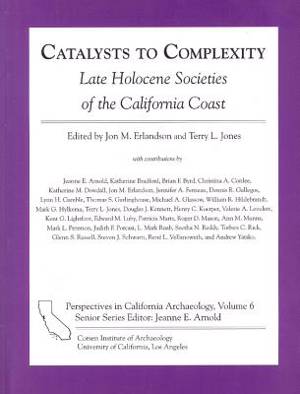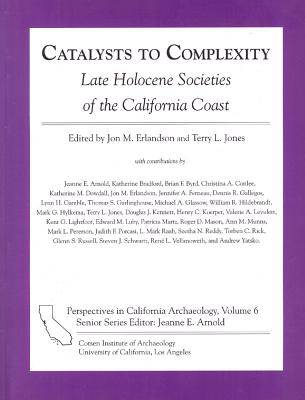
- Afhalen na 1 uur in een winkel met voorraad
- Gratis thuislevering in België vanaf € 30
- Ruim aanbod met 7 miljoen producten
- Afhalen na 1 uur in een winkel met voorraad
- Gratis thuislevering in België vanaf € 30
- Ruim aanbod met 7 miljoen producten
Zoeken
Catalysts to Complexity
€ 13,45
+ 26 punten
Omschrijving
When the Spanish colonized it in AD 1769, the California Coast was inhabited by speakers of no fewer than 16 distinct languages and an untold number of small, autonomous Native communities. These societies all survived by foraging, and ethnohistoric records show a wide range of adaptations emphasizing a host of different marine and terrestrial foods. Many groups exhibited signs of cultural complexity including sedentism, high population density, permanent social inequality, and sophisticated maritime technologies. The ethnographic era was preceded by an archaeological past that extends back to the terminal Pleistocene. Essays in this volume explore the last three and one half millennia of this long history, focusing on the archaeological signatures of emergent cultural complexity. Organized geographically, they provide an intricate mosaic of archaeological, historic, and ethnographic findings that illuminate cultural changes over time. To explain these Late Holocene cultural developments, the authors address issues ranging from culture history, paleoenvironments, settlement, subsistence, exchange, ritual, power, and division of labor, and employ both ecological and post-modern perspectives. Complex cultural expressions, most highly developed in the Santa Barbara Channel and the North Coast, are viewed alternatively as fairly recent and abrupt responses to environmental flux or the end-product of gradual progressions that began earlier in the Holocene.
Specificaties
Betrokkenen
- Uitgeverij:
Inhoud
- Aantal bladzijden:
- 377
- Taal:
- Engels
- Reeks:
- Reeksnummer:
- nr. 6
Eigenschappen
- Productcode (EAN):
- 9781931745086
- Verschijningsdatum:
- 1/07/2003
- Uitvoering:
- Paperback
- Formaat:
- Trade paperback (VS)
- Afmetingen:
- 206 mm x 269 mm
- Gewicht:
- 1133 g

Alleen bij Standaard Boekhandel
+ 26 punten op je klantenkaart van Standaard Boekhandel
Beoordelingen
We publiceren alleen reviews die voldoen aan de voorwaarden voor reviews. Bekijk onze voorwaarden voor reviews.










